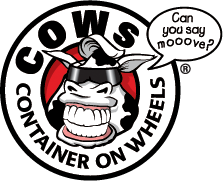Even with the most careful moving companies, you’re going to need insurance. Movers are crucially important to the process of getting out of your old space and into your new home, but mistakes do happen. Any mover can damage your stuff and in most cases, they’re not legally responsible for it if they did so by accident. Very simply, nobody’s perfect, that’s why we have insurance for our moves.
What Is Valuation Protection?
Valuation coverage, or valuation protection, is a type of insurance that specifically covers and bonds your belongings against damage incurred by movers as they’re moving your things. When you have valuation coverage, the value of your goods can be recovered in the event of loss or damage. All moving carriers cover valuation coverage. But valuation coverage, while good, isn’t perfect. First, it’s based on self-perceived replacement value, so they may or may not cover the true cost of replacing missing goods. And second, valuation coverage is offered, but not required to be accepted.
How is Valuation Coverage Different from Moving Insurance?
Valuation coverage is coverage specifically to protect your belongings from mover-induced damage, such as when a bookcase or a chest of drawers is bashed against a corner during a move. It also covers against mover loss, such as when a piece of furniture goes missing between departure and arrival. By contrast, moving insurance covers both mover-induced losses as well as fire and natural disasters. Earthquakes, hurricanes, and tornadoes are all covered by moving insurance, but not by valuation protection. Because of this, moving experts like American Van Lines recommend carrying both types of insurance. Luckily, full protection while moving should only cost roughly 1% of the value of your belongings, according to Forbes.
How Do You Cover High-Value Items?
In the moving industry, an item that’s worth more than $100 per pound is considered a “high-value item.” High-value items need to be listed on a declaration of high inventory form and must be accounted for on both ends of the move. In addition, high-value items can be and often are covered by specific floater insurance for each item, creating additional valuation protection for the things that matter most to your family. High-value items are typically precious jewelry and family heirlooms.
Moving can be a stressful experience for everybody. Insurance makes it less stressful. Talk to your insurance carrier today for a no-obligation moving insurance quote.

